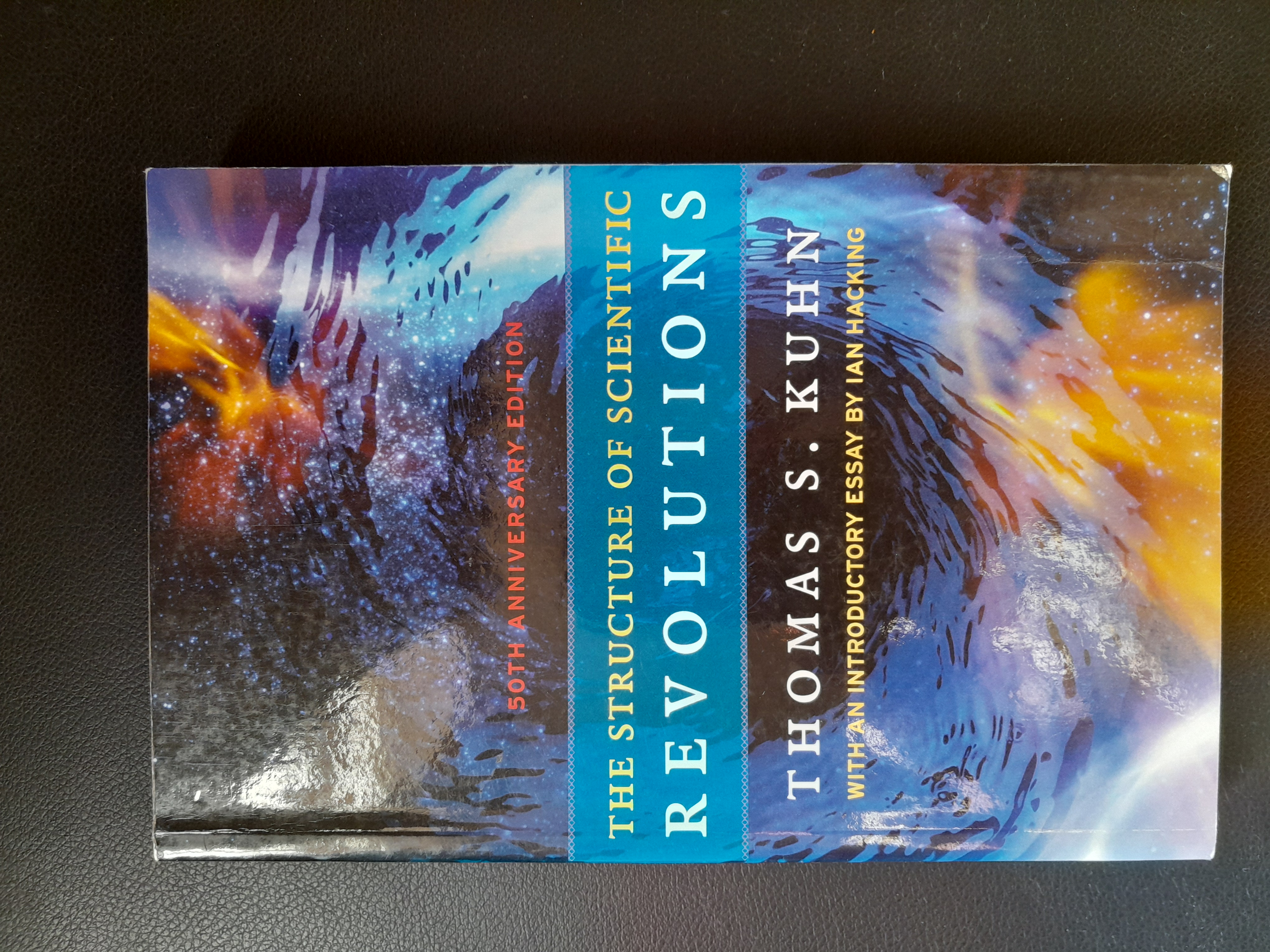Book Review: The Structure of Scientific Revolutions by Thomas Kuhn
March 22, 2025

This is a short review of the classic book The Structure of Scientific Revolutions by Thomas S. Kuhn, which shook the world of science at the time and continues to inspire lively debates even now. This review refers to the 4th edition (50th Anniversary edition) published in 2012. And yes, this is the book that introduced the buzzword Paradigm and Paradigm shift!
Introduction
This book is a work of passion. It is immediately apparent right from the get-go that this is a book, which wants to change the worldview. More specifically, how the society views science as an activity. For the most part, it does not appear to be a flattering view. However, it is not a criticism either. It is an attempt at presenting the truth, as the author understands it, as plainly as possible.
The book is written as a series of essays with somewhat overlapping content. The aim of the book is to explain how science is practised and how it progresses by taking a wide view of the field. Now, that view may not match the self-image of the practitioners of the field, i.e. the scientists themselves. However, that is the stated aim of the book - to change how society perceives the practice of science, as stated emphatically in the opening sentence of the book:
The book is written as a series of essays with somewhat overlapping content. The aim of the book is to explain how science is practised and how it progresses by taking a wide view of the field. Now, that view may not match the self-image of the practitioners of the field, i.e. the scientists themselves. However, that is the stated aim of the book - to change how society perceives the practice of science, as stated emphatically in the opening sentence of the book:
History, if viewed as a repository for more than anecdote or chronology, could produce a decisive transformation in the image of science by which we are now possessed.
And it has largely succeeded at doing just that, as the past half century since its publication has shown.
Background
To understand the book well, it is first important to understand the contrasting theory that it was trying to displace. Karl Popper's theory of falsification presented the following picture of how science is done. In Popper's view, scientists make observations and collect data. Then a hypothesis is formed considering all the collected data. Importantly, the hypothesis must be falsifiable. Then either the hypothesis is confirmed or it gets falsified by further experiments. If it is falsified, then a new hypothesis is created. Otherwise, it gets confirmed and becomes part of the cumulative bank of knowledge.
Structure
However, Kuhn presents a radically different view of practice of science. According to Kuhn, there are various stages through which science develops. These stages start with Pre-paradigm. Then eventually a Paradigm is established and Normal ScienceTM is conduced. Kuhn calls the activities done in this stage - Puzzle solving. In this stage, the established paradigm is extended to all corners. However, eventually, an anomaly is detected and crisis overshadows the paradigm. The community selects a new paradigm which solves the crisis problem. And, there is a wholesale shift to a new paradigm a.k.a. a Revolution happens.
As per Kuhn, these revolutions are often triggered by outsiders. A revolution is not just a new hypothesis or a theory. It is a change in worldview. Kuhn introduces a term to explain this: Incommensurability. It means, even the scientific terms mean a different thing after a revolution. So, it is not even possible to compare the theories before and after a revolution.
Kuhn presents a different view of progress in science. It is not a path which leads closer and closer to Truth. Rather, it is just an evolution without a goal. However, if revolutions are guided properly i.e. by scientists and leaders without any other bias, then the whole process of moving from paradigm to paradigm, via revolutions, may lead to progress and the Truth. Otherwise, it may get astray.
As per Kuhn, these revolutions are often triggered by outsiders. A revolution is not just a new hypothesis or a theory. It is a change in worldview. Kuhn introduces a term to explain this: Incommensurability. It means, even the scientific terms mean a different thing after a revolution. So, it is not even possible to compare the theories before and after a revolution.
Kuhn presents a different view of progress in science. It is not a path which leads closer and closer to Truth. Rather, it is just an evolution without a goal. However, if revolutions are guided properly i.e. by scientists and leaders without any other bias, then the whole process of moving from paradigm to paradigm, via revolutions, may lead to progress and the Truth. Otherwise, it may get astray.
Conclusion
Whether one agrees with the content of the book or not, it is without doubt a great book. It takes on an issue, the practice of science, which many people must have very strong opinions about. The arguments have been presented forcefully. The only drawback of the book is that, Kuhn uses some of the same examples over and over again, albeit from different angles, to prove his point. All the examples are taken from Physics and Chemistry like the discovery of Oxygen, Atomic Structure etc. which is understandable since Kuhn was himself trained as a physicist.